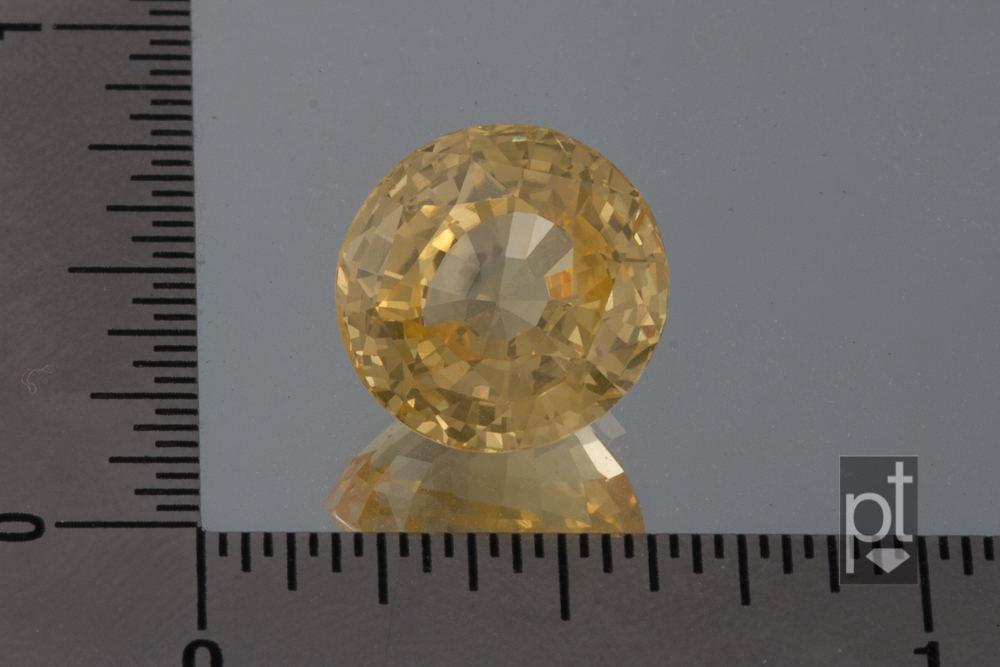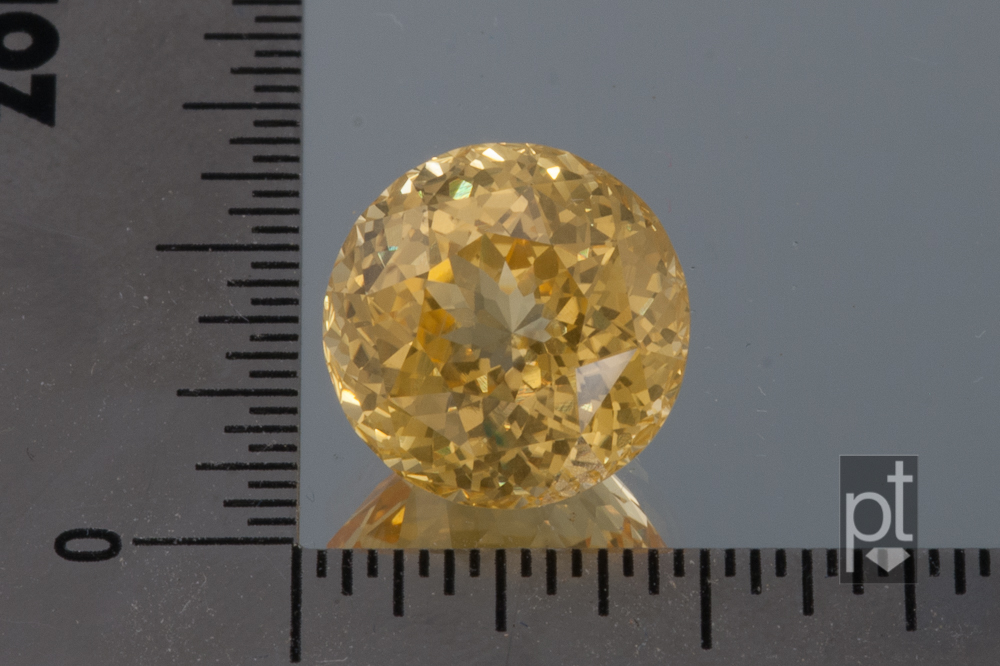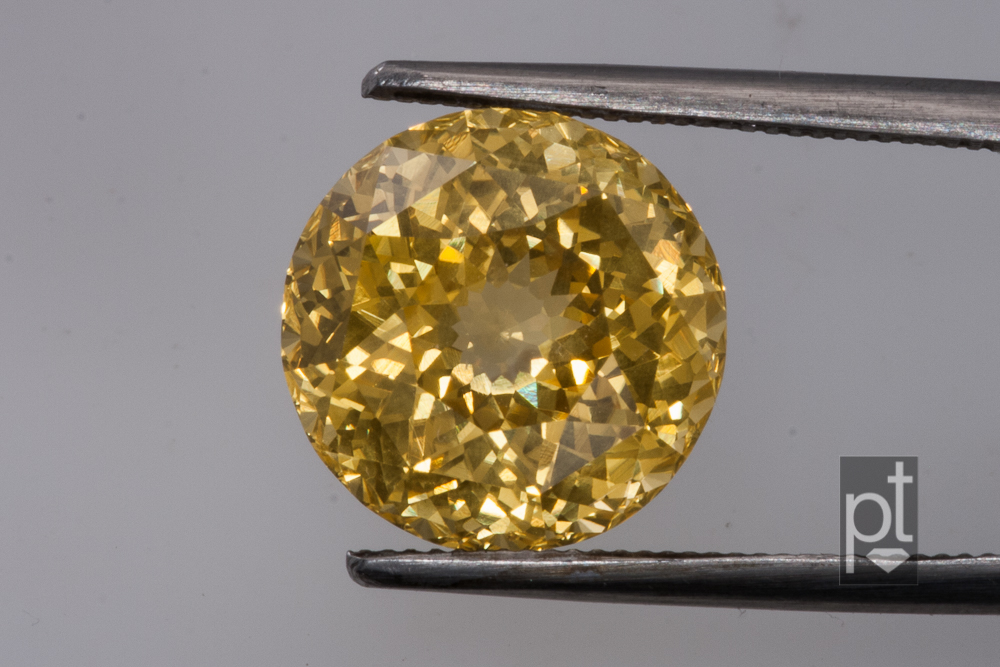All large sapphires are rare. In today’s market, untreated sapphires of any fine color are very rare indeed. Sizable round, untreated, fine color sapphires? Well, suffice to say that they’re almost impossible to source when you want one. That’s why I invested in this large, untreated yellow sapphire at the AGTA show in Tucson this past February.
Because of the prevalence of beryllium diffusion treatment, buying yellow sapphire can be risky even from a reputable vendor. This particular stone came with a recent report from the AGL stating they believe its color is natural. But this stone had one other really important feature for me: it could be improved by recutting.
Here’s an image of the original stone:

In this image, it weighs 9.67ct. The stone is generally round, but just asymmetrical enough to pull at the eyes (11.80×11.91m). There is an obviously window, but it is canted in such w a way that it presents a strange oval-like opening to the viewer. The general impressions is of a round, but not-quite-right stone.
Not as easy to observe, is the hidden color potential in the stone. If I handed the stone to you at this point and you moved it around in your hand, you would be able to observe some richer areas of color around the edges of the stone and some scattered sparkle. There is serious potential here, but it has to be carefully coaxed out of the stone.
Now look at the stone after recutting:

The first thing I did to the stone was correct the girdle symmetry. The stone is now round (11.49×11.53mm) and no longer pulls at my eyes.
Next, I set to work correcting the girdle. By matching the original angles as closely as I could at the girdle line, I gently and slowly removed the old facets and replaced them with facet tiers that sloped to the center at regular intervals. I used a sort of Portuguese pavilion design because it is both flexible from a faceting perspective and gives a great play of light to the finished stone.
At the center of the pavilion (the culet), I had to make a decision — completely close the window and lose some more weight or leave a planned window and retain some weight. I tried to do a bit of both — I minimized the central window, but didn’t close it completely. This macro image exaggerates the end result: in hand, the window is not very obvious at all, especially on movement.
The crown of the original stone had a nice design, but needed some improvement in symmetry (especially the table). I reworked the crown staying as close to the original as possible, but improving everything, especially the polish.
In the end, the stone is now visually pleasing, throws lots of sparkle (the camera caught some hints of dispersion around the edges) and is quite a bit richer in tone.
Improvements always come at a cost. The stone now weighs 8.30ct; approximately 86% of it’s original weight.
But it was worth it — the stone is now simply beautiful and worthy of a high-end custom jewel.

